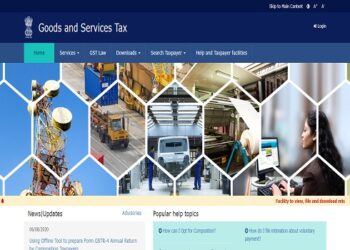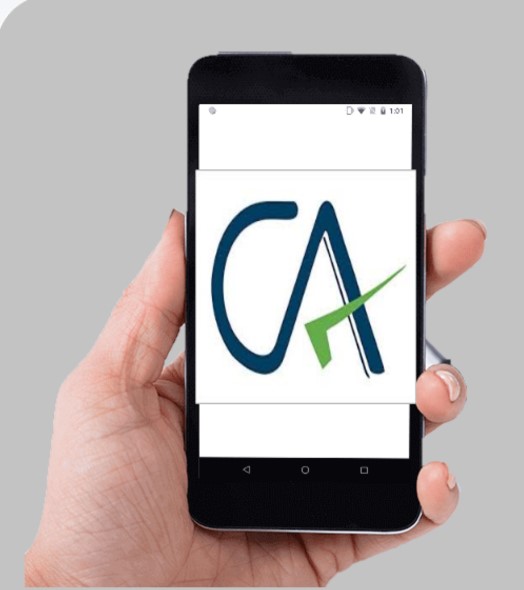GST registrations will now have in-person verification before registration is granted to any applicant. The government has notified on Tuesday the recommendations of the Law Committee of the GST Council in order to control the menace of GST fake invoice frauds.
The Law Committee recommendation as notified are central to four key themes, namely tightening of verification process for new registration, suspension based on data analytics and mismatches, minimum cash payment to deter dummy businesses and ease of doing business and precise targeting in the interest of small business intelligently protected.
The notified measures, as approved by the GST Implementation Committee (GIC) and deliberated among the 10 States’ members and the Centre’s representatives in the GSTC’s Law Committee during several rounds of discussion, would help tackle menace of fake invoices for availing and passing on of input tax credit (ITC) by fraudsters.
They will also simultaneously ensure that there is no impact on the Ease of Doing Business which is achieved in GST through liberal registration, refund regime and self-compliance system with little or no manual checks. The main recommendation of the Law Committee of GST Council is to control the fresh or new registration taken by applicants without business purpose and weeding out existing fake dealers from the systems.
Measures, hence, notified towards systemic tightening of new registration by identifying fake dealers, modifications in the registration process, use of Aadhaar during registration and Aadhaar like capturing of details during registration would impact the menace of mushrooming fake firms and ITC fraud by fly-by-night operators.
Verification of New Registration: Under these measures as per the notifications, now there must be in-person verification before registration is granted to an applicant. Further, in case an applicant opts for Aadhaar authentication, he will undergo biometric-based Aadhaar authentication at one of the Facilitation Centres notified by the Commissioner.
In case the applicant has not opted for Aadhaar authentication, then for processing the application, biometric information and verification of KYC documents must be undertaken at the verification centres. This verification process may also include taking photograph and verifying original documents of the applicant uploaded with the registration application.
This amendment will come into effect from a date to be notified in near future after setting up of facilitation centres on the lines of Passport Seva Kendras or Aadhaar Seva Kendras. In effect, GST is moving in the direction of better verification regime for registration of new businesses with most steps taken in an automated environment.
The new timeline for grant of registration for Aadhaar authenticated applicant is now 7 days for proper scrutiny of application. To counter the cases of fake invoices, in a few risky cases where a person has successfully undergone Aadhaar authentication, some additional physical verification may be carried out with the approval of an officer, authorised by the Commissioner. The timeline for grant of registration in such cases would now be 30 days.
Cancellation and Suspension: In the new regime notified, the suspension and cancellations would be based on data analytics and mismatches. A registration now is also liable for cancellation where the input tax credit is availed in violation of provisions of the CGST Act or the details of outward supplies in FORM GSTR-1 are in excess to the outward supplies declared in FORM GSTR-3B, for one or more tax periods.
Such cases lead to ITC being passed or availed without payment of tax and would, therefore, be liable for cancellation of registration. During the proceedings of cancellation, these taxpayers would remain suspended. During comparison of GSTR-3B with GSTR-1 and GSTR-2B of a registered person, if the parameters indicate towards significant differences, then the registration may be suspended and proceedings may be started for cancellation of registration.
However, the suspension of registration issued under this rule may be revoked by the proper officer in case the difference is justified by the registered person. Such suspension would be applicable with immediate effect to prevent passing on of fake input tax credit.
Minimum Cash Payment: In another significant change in the rules to deter dummy businesses, the present eligibility limit of availing 10% input tax credit (ITC) by a registered person in respect of invoices where the details have not been furnished by his suppliers would be reduced to 5 per cent w.e.f. 1 January 2021, as consequent to the implementation of QRMP scheme with the facility of IFF. It will be possible for small and medium suppliers to upload invoices monthly while filing return quarterly. This would ensure that large taxpayers continue to procure from small taxpayers.
To curb fake ITC availment and passing on of such credit by unscrupulous persons who generally pay no tax in cash, particularly in those risky cases where GST turnover does not match with the income tax returns and where the value of taxable supply other than exempt supply and zero-rated supply in a month exceeds Rs. 50 lakh, such registered person will not be able to use the amount of ITC available in electronic credit ledger to discharge liability towards output tax in excess of 99 per cent of such tax liability. At least 1% liability would need to be discharged in cash. This change will come into effect from 1 January 2021.
Ease of Doing Business & Precise Targeting: However, there are some exemptions to the above provision of limiting ITC utilisation to ensure Ease of Doing Business. Accordingly, where a taxpayer has paid more than Rs 1 lakh as income tax in each of the last two financial years or has received a refund of unutilised ITC on account of zero rated supply or inverted duty structure of more than Rs 1 lakh in the preceding financial year or has discharged his liability towards output tax through the electronic cash ledger for an amount in excess of 1% of the total output tax liability, cumulatively till that tax period.
Such tax payers can use more than 99% ITC to discharge tax liability. Further, the Government Departments, the Public Sector Undertakings, local authorities and/or statutory bodies, are exempted from this limit on ITC utilisation. Therefore, the Ease of Doing Business for genuine taxpayers, businesses entities and traders and Precise Targeting in the interest of small businesses would not be impacted as the Law Committee has suggested measures on precise identification of potentially riskier taxpayers based on very well defined parameters run on the automated environment.
In the same spirit, furthermore, to control the fake invoice menace, now if a registered person has not filed Form GSTR-3B for two preceding months then his Form GSTR-1 will not be generated. Similar restriction has been placed for QRMP taxpayers if the Form GSTR-3B is not filed for the preceding one tax period of 3 months. Collectively these steps are likely to control dummy registrations and fake billing for ITC to take GST process towards a cleaner and robust regime











![[Live] Updates and Tax changes for Budget 2023 | Tax on cryptocurrency | Income tax and GST udpates in Budget 2023 [Download Bill]](https://www.taxontips.com/wp-content/uploads/2023/02/Budget-2023-120x86.webp)

